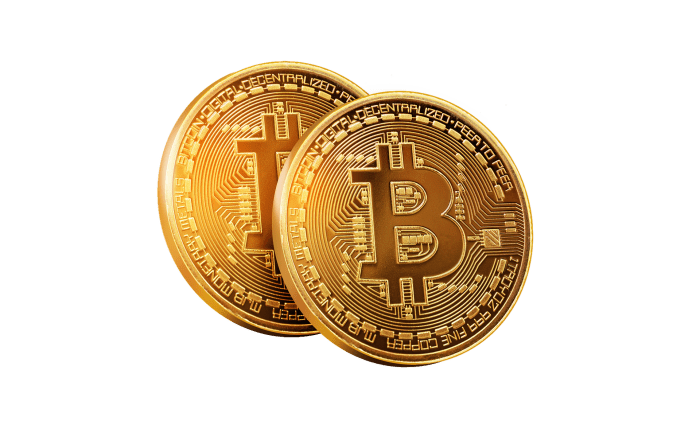Bitcoin is a cryptocurrency (or digital currency) that allows instant payment to anyone and anywhere. Bitcoin was invented in 2007 by ‘Satoshi Nakamoto,’ and it started working on its pre-stage in 2009. In the beginning, it was used as ‘open-source software’. Bitcoin is a digital currency that doesn’t belong to a central bank or any single administrator can be sent one user to another through peer-to-peer bitcoin networks without intermediaries like banks and other money transfer methods. Bitcoin is like real currency; it can buy anything on the internet just like the real money does. We have compared the top ones and found that Bitcoin, Tether and Binance Coin are the top-3 cryptocurrencies with the highest market capitalization.
How does bitcoin work?
For a new user, it’s pretty much like how an Email works, and it works just like that. In Email, a person sends data to another person, similarly in bitcoin data, replaces digital money. You need to install a personal bitcoin wallet on your mobile or computer, and then it will generate your first bitcoin address. You can also have more than one address as you need. You disclose your address to your friends so they can pay you. Bitcoin addresses should be used only once, and then you have to add a new address.
How safe are bitcoins transactions?
Bitcoin transactions are recorded by a public ledger called ‘blockchain.’ Blockchain is the starting process of transactions in bitcoin. Bitcoins wallets keep hidden data, called a private key or seed, which is used to sign transactions. Also, it used to provide a mathematical proof that they came from their owner’s wallet. This proves how secure the bitcoin transaction is. All transactions are broadcast to the network through a process called bitcoin mining. If you are looking for any small business ideas, bitcoin trading is something that you can try.
What is Mining?
It is a distributed consensus system which uses to confirm pending transactions by including them in the blockchain. To preserve the neutrality of the network, mining enforces a chronological order in the blockchain and allows different devices to agree on the state of the system. You can invest in bitcoins using the online bitcoin trading website bitcoinsystem.app/de
To be sure, the transaction must be packed in a block with stringent rules that are required to be verified by the specific network. These rules prevent previous blocks from being modified because doing this would invalidate all the subsequent blocks. These blocks connect to other blocks and make the blockchain. Bitcoin transactions are completed securely by this process.
Merits of bitcoin
1. Fast peer to peer transaction
Bitcoin is open-source, its design is public, nobody owns and controls Bitcoin, and everyone can take part in it. It is merely a person to person money transfer which is fast and trustable.
2. Worldwide payments
Hundreds of merchants accept bitcoins payments. You can purchase any item from it and also earn bitcoins from selling items. It is like an international currency. Paying bitcoin to someone who is in another country is as easy as paying someone in the streets.
3. A higher value is relative to other cryptocurrencies
Have look on Crypto Head to know that the bitcoin has the most potent and stable value compared to any other digital currency at this time. This allows individuals to keep their original cost when converting to fiat currencies such as U.S. dollars and euro.
4. Low processing fees
Bitcoin comes with lower transaction fees compare to other digital payment methods such as credit cards and PayPal. Another digital payment method transaction cost is more than 2% or 3%; on the other hand, the bitcoins transaction value is more than 1% of its value.
Demerits of Bitcoin
1. Black market activity
Bitcoin is always attractive to criminals and grey market participants. It is always assumed that corrupt people hide their black money through bitcoin. Black Money can lead to a significant misuse of bitcoin.
2. No refunds or chargebacks
All credit card companies and traditional online processors have a policy for chargebacks or refunds, but bitcoin didn’t have this facility. If you order something and the seller never delivers the product, users can’t request a refund through bitcoin. This feature is yet to be built into bitcoin. In addition, the value of a currency is volatile, which might cause loss or profit both.
3. Always popular in hackers
Since bitcoin is the world’s most famous cryptocurrency, it faces more share of scams, fraud, and attacks than any other standard cryptocurrency do.
4. Negative environmental impact
Bitcoin mining causes environmental degradation. Blockchain companies consumes vast amounts of electricity. Big bitcoin mining companies use electricity from dirty coal plants, which makes routinely horrific smog, which makes a harmful environment for living beings.
Recommended Reading: Understanding the Electronic Yuan
















